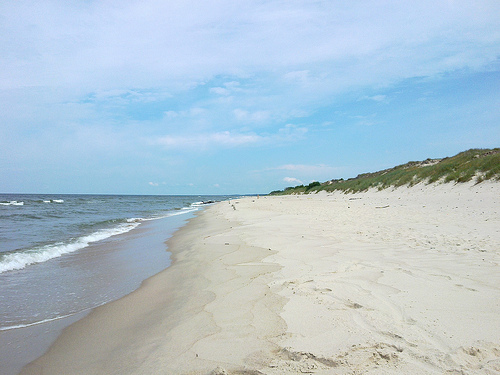Enjoy some fish on a spit at the Curonian Spit.
- The Curonian Spit is a long, thin piece of land, known as a ‘spit’, that separates two water bodies – the Baltic Sea and the Curonian Lagoon, in Lithuania in northern Europe, and western Russia.
- The UNESCO World Heritage Convention designated the Curonian Spit, also known as ‘Kuršių nerija’ a World Heritage Site in the year 2000, and the area contains a number of reserves and national parks.
- As a sand dune formation, the creation of the Curonian Spit possibly occurred through wind and water movements that piled sand at levels high enough to deter water.
- The Curonian Spit spreads a length of 98 kilometres (61 miles) with a width ranging from 0.4 to 3.8 kilometres (0.25 to 2.4 miles), and some of the sand dunes can reach heights of up to 60 metres (197 feet).
- Curonians, Russians, Lithuanians, Germans and Prussians have all occupied the Curonian Spit at various stages, and according to a native Balt legend, the spit was created by a child Neringa, a giantess, who enjoyed the shore as a play site.
Curonian Spit
Image courtesy of Borya/Flickr
- Around the mid 1700s, after significant deforestation caused a lack of sand dune stabilisation, 14 villages on the Curonian Spit were buried by sand.
- Successful large scale revegetation of the Curonian Spit sand dunes has occurred over two centuries, and a sand ridge was also created during this time to impede sand movement.
- Despite the prominence of sand dunes in the Curonian Spit vicinity, areas of the spit are rich in flora and fauna, while approximately 10 to 20 million birds migrate across the area annually.
- A stone sundial has been constructed on the top of Parnidis dune, one of the Curonian Spit’s many dunes, located in the town of Nida.
- The Curonian Spit is popular among tourists for bird watching, boating and fishing, although a permit to catch fish is required, and there are a number of historic villages and museums to visit in the area.
Bibliography:
Curonian Spit, 2015, UNESCO World Heritage Convention, http://whc.unesco.org/en/list/994
Curonian Spit, 2015, Wikipedia, https://en.wikipedia.org/wiki/Curonian_Spit
Human Impact, nd, Kuršių nerijos, http://www.nerija.lt/en/culture/human-impact







